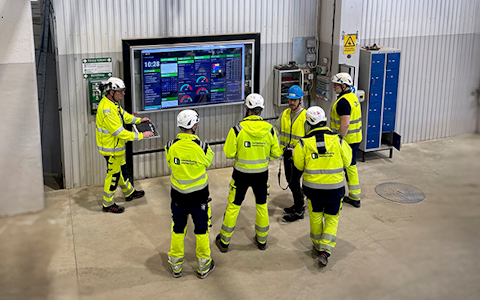
Digital dashboards that help you identify deviations and make the right decisions.
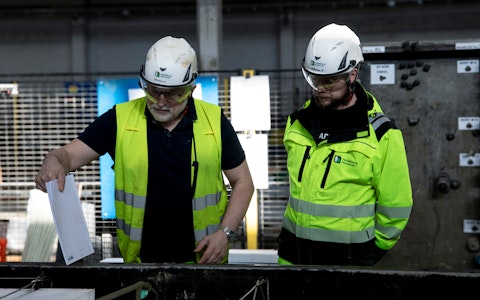
Capture your deviations and turn them into improvements
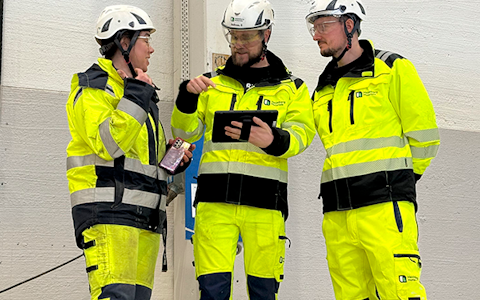
Continuous improvement, Kaizen boards, PDCA and other tools.
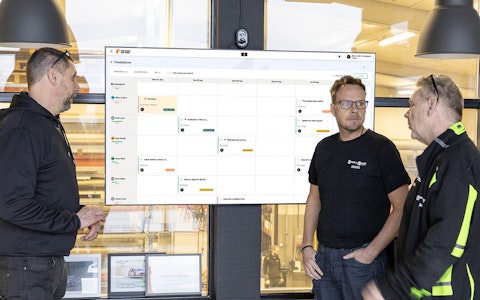
All your team’s tasks, neatly organized in one weekly view.
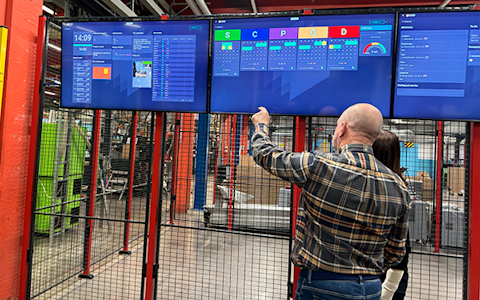
Improve key performance indicators within your specific focus areas with our SQCDP board.

Use the PDCA cycle as a tool to improve both quality and processes
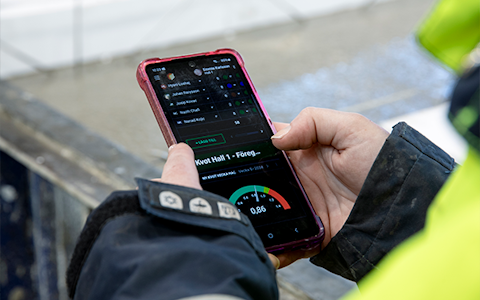
Digital tools for 5S work, recurring audits, and a well-organized workplace.
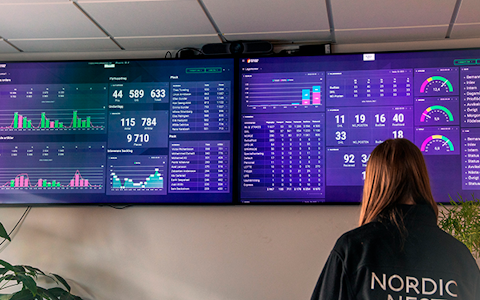
Visualize KPIs and communicate effectively throughout the entire organization.

Basic project management and activity boards.
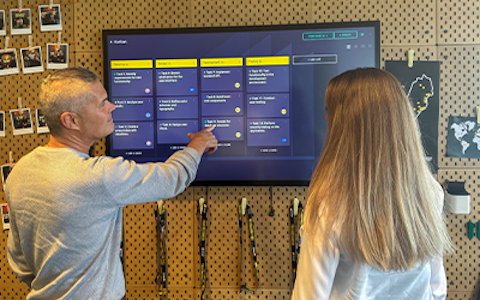
Kanban is a powerful method for visualizing, managing, and optimizing workflows.
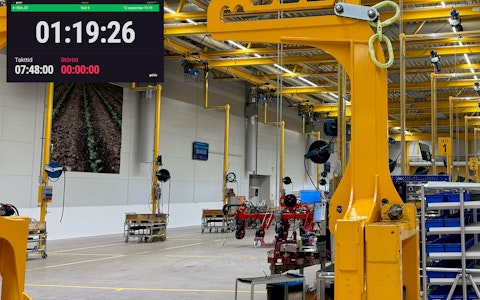
Digital dashboards for takt time flow with takt time counter and stop time log.
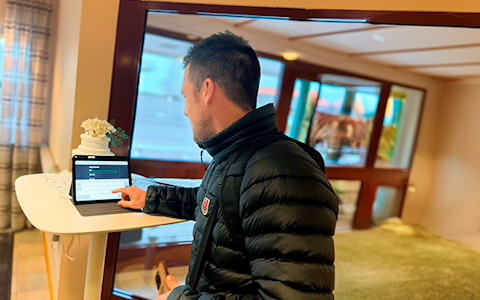
Digital visitor registration provides full control over all planned and executed visits to your business.
He has had a wide range of professional roles over the years. But leading change runs like a red thread through Jonas Jadling's career. With a people centred approach and Lean, daily management and continuous improvement in the toolbox, he has built successful businesses.

We sat down with Jonas for a conversation about leadership, the journey from analog to digital systems and the importance of nagging.
As mentioned, the roles have changed over the years – how about; operator, team leader, operations manager, production leader, production manager, maintenance manager, site manager and CEO. And along with this, of course, the perspectives have been broadened.
How did you become interested in exploring different working methods?
– I can actually point to one single project that was an eye-opener for me. After the investment in a new trimming saw machine park at a sawmill in Skinnskatteberg, I was responsible for start-up and further operation. I set out with the mindset that this is a technology dependent project. So I initially thought that it was new machines that would deliver the results we wanted. But quickly realized that it is how we work with them that is decisive, not the machines themselves, says Jonas and continues:
– You have to focus on the people to make the technology useful. In the project with the trimming saw, we had to find and train completely new ways of working in order to get a return on the investment. To succeed in such a situation, you must create participation and get all employees to join the journey. In this case, 5S and structured improvement work became important parts of the solution. We pretty much started from scratch and step by step we worked to create order and minimize waste.
What were the biggest challenges?
– The biggest challenge in general is setting aside time, and that was also the case in the project above. As a leader, you must dare to give room to learn even when you face resistance. Both among employees and from managers higher up, you will hear "we don't have time for that" when you take away valuable production time, even if the goal is ultimately to gain more production time. At the sawmill in Skinnskatteberg, the results spoke for themselves. We changed the culture from the ground up, troubleshooting and maintenance became easier and we reached production goals faster than anyone expected.
An excellent way to make continuous improvement thrive is to nurture it through daily management. Jonas has implemented and refined daily management in several organizations, most recently in the role of interim CEO at Moelven Dalaträ in Mockfjärd.
– When I first saw the effects of daily management, I did not understand how I had been able to manage operations without it before. It offers so many advantages, by capturing deviations on a daily basis you get the basis for quick decisions to make the most out of the day. You minimize the risk of missing important things and at the same time you feed the improvement work with new proposals. But the biggest and most important effect is probably that you push decision-making down into the organization and give those who work closest to production a mandate to influence and develop it. Daily management turns the communication around, there is no longer an information flow from above, but instead knowledge that spreads from the bottom up.
In connection with daily management, you have said that leaders must dare to nag. Can you develop that?
– Yes, daily management basically involves asking the same questions every day. And of course it can easily be perceived as a bit annoying when you nag everyone to repeat the same thing over and over again. But it is precisely through that repetition that we imprint what is important. The questions should reflect the company's values and goals broken down at all levels all the way from management down to each shift. There are of course areas that are central in most manufacturing companies, such as health/safety, quality, delivery and so on. But the ways to follow them up in the best way differ and therefore it is important to create participation by having the employees set the routines together.
Once you have taken your first steps in daily management and continuous improvement, how do you maintain the new ways of working, develop and spread them to more parts of the organization?
– First of all, be visible as a leader. Attend daily pulse meetings out in the operation and show that you care. I guarantee that you have the time to set aside and it also gives you the opportunity to better anchor why you do what you do. That is important when you're aiming for change, only when everyone understands why the change needs to be implemented can they also be involved and influence how you should implement it in the best way.
– When you show through active leadership that you trust the employees themselves to develop the way they work, then you create active employee engagement. Start with a pilot in a defined part of the business, a process section or similar. Positive results in the pilot are guaranteed to arouse curiosity in other parts and facilitate the spread in the rest of the business.
Jonas has implemented daily management and structured improvement work in a number of operations. He has also made the journey from working with analog tools to introducing digital solutions such as Boards on Fire.
What are the biggest advantages that you see with digital tools in these contexts?
– Regardless of the type of system you are thinking of introducing, the first question you should ask yourself is; How will the new system simplify our operation? The system should not think for you, it should make it easier for you to make the right decision at the right time to achieve the desired result. When it comes to day-to-day management and improvement work, there are a lot of clear advantages with digital solutions – you get everything gathered in one place, you avoid paper work and you can go back to check historically how you have handled similar deviations in the past, says Jonas and concludes:
– Another important advantage of digital vs analog is that you ensure the flow of information in a much better way with a digital solution. We can take daily management as an example, when you have to verbally escalate information from one level to the next, you lose information and efficiency along the way. I tend to compare it to the whispering game where the message gets slightly distorted between each person and can end up being something completely different from what it was in the beginning. With a digital solution like Boards on Fire you get accurate information everywhere without losing any time along the way.
Happens at Boards on Fire
Free web demo